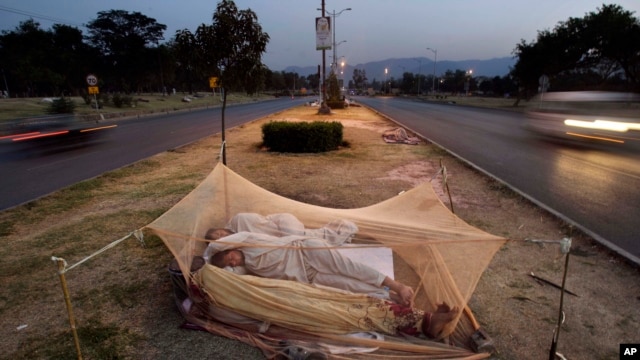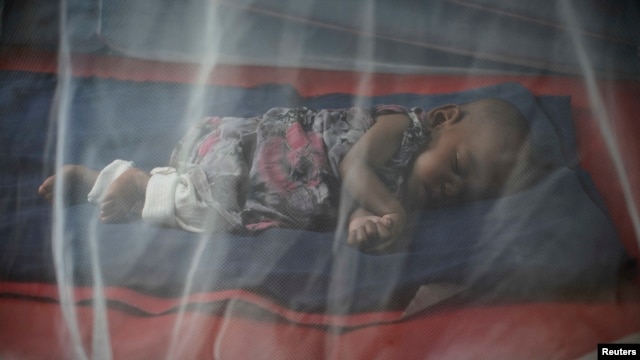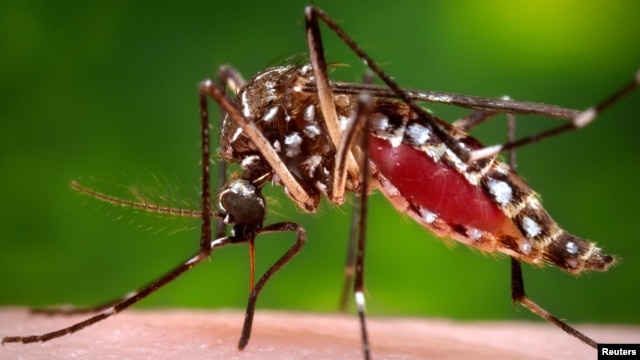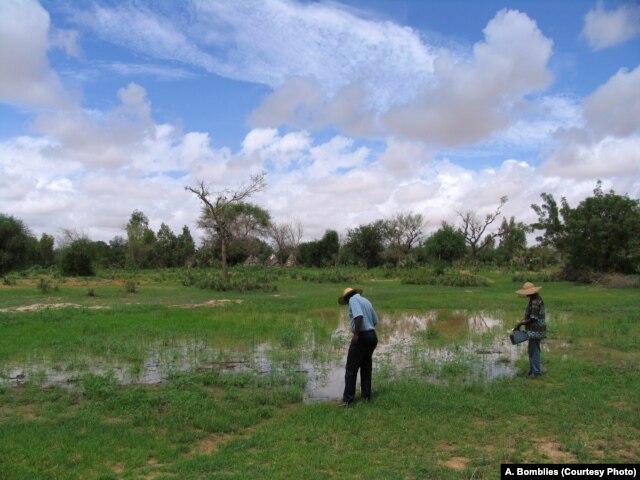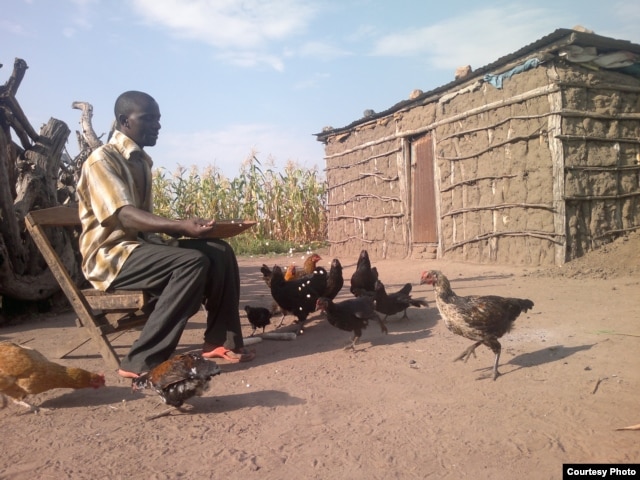Annie
Diamond Member
- Nov 22, 2003
- 50,848
- 4,827
- 1,790
http://abcnews.go.com/Health/wireStory?id=2448821&page=1
http://gladwell.com/2001/2001_07_02_a_ddt.htm
http://reason.com/hod/rb112900.shtml
WHO Calls for More DDT Use Vs. Malaria
World Health Organization Urges Developing Countries to Use DDT More-Outdoors-In Malaria Fight
By LAURAN NEERGAARD
The Associated Press
WASHINGTON - The World Health Organization on Friday called on more developing countries, particularly in Africa, to begin spraying the controversial pesticide DDT to fight malaria.
The difference: DDT, longed banned in the United States because of environmental damage, is no longer sprayed outdoors. Instead it's used to coat the inside walls of mud huts or other dwellings and kill mosquitoes waiting to bite families as they sleep.
A small number of malaria-plagued countries already use DDT, backed by a 2001 United Nations treaty that set out strict rules to prevent environmental contamination. But the influential WHO's long-awaited announcement makes clear that it will push indoor spraying with a number of insecticides and that DDT will be a top choice because when used properly it's safe, effective and cheap.
"We must take a position based on the science and the data," said Dr. Arata Kochi, the WHO's malaria chief. "One of the best tools we have against malaria is indoor residual house spraying. Of the dozen insecticides WHO has approved as safe for house spraying, the most effective is DDT."
"It's a big change," said biologist Amir Attaran of Canada's University of Ottawa, who has long pushed for the guidelines and described a recent draft. "There has been a lot of resistance to using insecticides to control malaria, and one insecticide especially. ... That will have to be re-evaluated by a lot of people."
The U.S. government already has decided to pay for DDT and other indoor insecticide use as part of President Bush's $1.2 billion, five-year initiative to control malaria in Africa.
Kochi has positioned indoor spraying as an important but neglected third weapon along with insecticide-treated bed nets and new medications in the war on malaria, which infects half a billion people each year and kills more than 1 million, most of them children.
While some well-known environmental groups have signed on to WHO's decision, it has generated some concern from groups like the Pesticide Action Network, which says there are questions about its effects on developing children.
But proponents argue that until better strategies are developed, carefully controlled DDT use is warranted because in recent years, nothing else has succeeded in lowering deaths from malaria.
"Indoor spraying is like providing a huge mosquito net over an entire household for around-the-clock protection," said Sen. Tom Coburn, R-Okla., a physician who has urged stronger international anti-malaria programs.
DDT is easily history's most notorious insecticide. While it isn't classified a human health hazard, it was banned in the U.S. in 1972 after decades of widespread agricultural spraying led to environmental damage around the globe.
DDT never disappeared in developing countries, although political pressure and lack of funding meant few continued to use it. Then a 2001 United Nations treaty that aims to wipe out a dozen of the world's most dangerous chemicals carved out one exception for DDT: indoor anti-malaria spraying, under strict conditions to prevent environmental contamination.
Why? When small amounts are sprayed on interior walls, DDT forms a residue that both repels mosquitoes discouraging them from flying into the house and kills those that rest on the walls, explained Clive Shiff, a professor at Johns Hopkins University's Malaria Research Institute. It has to be applied only about once a year.
Bednets soaked in different insecticides already are used to protect sleeping families. But if the nets are torn or aren't used every night, a mosquito can infect someone. Plus, mosquitoes can develop resistance to those nets' chemicals, Shiff added, pointing to a 2002 malaria outbreak in part of South Africa using bednets. DDT in those houses quelled the outbreak.
"It would be naive to say DDT is a magic bullet for malaria. It isn't," stressed Attaran. It won't work in some places where mosquitoes already are resistant to a range of insecticides, he noted. He suspects DDT will be of most use in eastern Africa, where that problem hasn't yet emerged.
Attaran called for research "to make sure we're using insecticides and DDT not in a willy-nilly way but in an optimal way in the right places."...
http://gladwell.com/2001/2001_07_02_a_ddt.htm
http://reason.com/hod/rb112900.shtml
November 29, 2000
Greens vs. the World's Poor
Limited use of DDT could save millions from malaria. So why are environmentalists and the U.N. hellbent on ending its production?
By Ronald Bailey, Reason Science Correspondent
Imagine that an international governing body got together with a cadre of special interests to deny millions of poor people access to a cheap substance capable of saving hundreds of thousands of lives annually. You'd think such an effort would be considered highly immoral, right? Probably even cause street demonstrations, boycotts, and other signs of public outrage.
Well, just such a campaign was launched three years ago by the United Nations Environmental Program, acting in conjunction with several major environmentalist organizations. There have been no demonstrations, no boycotts, and sadly, few signs of outrage.
That's because the substance is the much-vilified pesticide DDT, which remains the cheapest and most efficient means of reducing malaria. Malaria sickens 300 to 500 million poor people annually, killing as many 2.7 million. In sub-Saharan Africa, one in 20 children dies of malaria. That toll could go higher if a new United Nations Treaty on Persistent Organic Pollutants (POPs) is concluded next week in Johannesburg, South Africa. The POPs Treaty, which is being negotiated by more than 120 governments and is backed by more than 260 environmentalist groups, aims to eliminate totally the production and use of 12 organic pesticides, industrial chemicals, and byproducts, including DDT. Many of these substances are alleged to have unacceptable environmental and health consequences.
DDT has, of course, been a major target for the environmentalist movement ever since Rachel Carson hexed it in her influential 1962 book, Silent Spring. Widely used as an agricultural pesticide, Carson accurately indicted DDT for harming various forms of wildlife. Less accurately, she and others in her wake fingered residual DDT as causing problems in human beings, including increased rates of cancer. In 1972, the U.S. Environmental Protection Agency, then only two years old, banned it, a policy adopted by many other countries. Worldwide use of the pesticide plummeted. DDT remains a powerful symbol of environmental sin and environmentalists have literally been pursuing it to the ends of the Earth in their efforts to banish it forever. Elimination under the POPs Treaty was to be their final triumph over this accursed chemical.
However, it turns out that spraying small quantities of DDT on the interior walls and eaves of living spaces is one of the most effective ways to control malaria-carrying mosquitoes. In fact, during the 1950s and 1960s, DDT use nearly eradicated malaria in many countries. For example, malaria in Sri Lanka dropped from 2.8 million cases in 1948 to 17 in 1963. In India, the case load dropped from 100 million in 1935 to under 300,000 in 1969. Bangladesh was declared a malaria-free zone. DDT was also an important weapon against malaria in parts of the United States and Italy. The World Health Organization estimates that DDT may have saved as many as 50 million lives since it was introduced in 1945. A grateful world cheered when the man who discovered DDTs properties as an insecticide was awarded the Nobel Prize in 1948.
But that was then. As part of the U.N.s POPs negotiations, the World Wildlife Fund (WWF) and other environmentalist groups have argued that DDT should be totally banned by 2007. Alarmed, the worlds malaria control organizations have been fighting back.
"We said, Its a bad idea and its going to kill people," explains Amir Attaran, who works on this issue at Harvard Universitys Center for International Development. "The environmentalists sought to promote an environmental goal at a calculated risk to human life." The Malaria Foundation International circulated an open letter that has been signed by more than 600 of the worlds leading malariologists and other scientists, arguing that "setting a firm deadline to ban DDT places an unethical burden on the worlds poorest countries." According to former Surgeon General of the U.S. Navy, Harold Koenig, "DDT remains probably the most effective, affordable tool with which to fight malaria in the developing world."
In the wake of such criticism, environmentalist groups have backed away a bit from advocating a firm deadline for eliminating DDT. Richard Liroff, head of the WWFs Alternatives of DDT project, now says that "the only purpose of the deadline was to motivate technical and financial resources to help poor countries come up with alternative malaria control strategies." The August 2000 WWF statement on Eliminating DDT and Protecting Public Health acknowledges that "negotiators need to ensure that human health is not compromised as reliance on DDT is reduced." Liroff also points out that the WWF and other groups have accepted a proposal by South Africa that would exempt DDT for disease-control uses (as opposed to agricultural ones), although the parties to the POPs Treaty would periodically "evaluate the continued need for this exemption." "Some people are trying to make this controversy fit the caricature of tree huggers not caring about people, but its not true," Liroff insists.
Chalk one up for the good guys? Not so fast.
First, Harvards Attaran worries that the procedural barriers and controls put on DDT by the POPs Treaty may raise its cost so much that many poor countries will not be able to afford to continue using it. Second, the WWF Core Issues Statement on the Johannesburg conference still asserts that "negotiators need to remain firm and committed to making elimination the central objective of the POPs Treaty." That includes DDT. Similarly Greenpeaces briefing paper on the Johannesburg meeting insists that the POPs Treaty must adopt "measures to put an end to the production of and use of all existing POPs." Again, that includes DDT.
So the total elimination of DDT remains the real goal. Attaran points out that Greenpeace is currently trying to shut down one of the worlds two remaining manufacturers of DDT in India. "Thus they may accomplish through the back door what they couldnt accomplish through the front door," says Attaran.
Why this relentless pursuit of DDT down to the last molecule? Vice-President Albert Gore suggests one answer in his introduction to the 1994 reissue of Silent Spring, a book often cited as the founding text of contemporary environmentalism. Before Carson's book, he writes, "There was virtually no public dialogue about the growing, invisible dangers of DDT and other pesticides and chemicals." The fears that have come down the decades from Rachel Carson are summarized in the WWF Core Issues Statement, which claims that "even small quantities of POPs can wreak havoc in human and animal tissue, causing nervous system damage, disease of the immune system, reproductive and developmental disorders, and cancers." Eliminating POPs generally, and DDT specifically, are at the very heart of the modern environmentalist movement.
Doing so may be a noble cause to greens, but the cost of success will be measured in human lives. Setting aside health concerns about other POPs, and accepting that using DDT in agriculture harmed wildlife, it simply isn't true that using DDT to control malaria is a health risk.
"The scientific literature does not contain even one peer-reviewed, independently replicated study linking DDT exposures to any adverse health outcome" in humans, says Amir Attaran. "No study in the scientific literature has shown DDT to be the cause of any human health problem," concludes Richard Tren and Roger Bate in When Politics Kill: Malaria and the DDT Story, a new study from the Competitive Enterprise Institute.
Such facts have failed to undermine environmentalist dogma. "Because Carsons work led to the ban on DDT," Al Gore concluded in his commemorative introduction to Silent Spring, "It may be that the human species or at least countless human lives, will be saved because of the words she wrote."
Sadly, it's more likely that, because a blinkered orthodoxy cannot accept the heretical notion that DDT has some beneficial purposes, countless human lives will be lost.
Ronald Bailey ([email protected]) is Reason Magazine's science correspondent.



